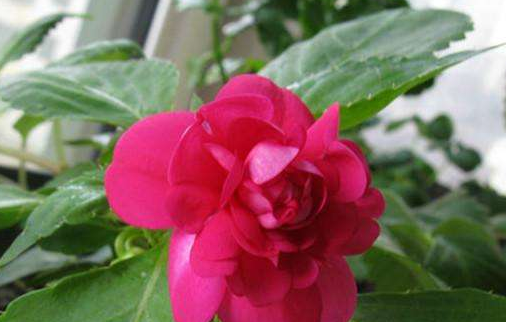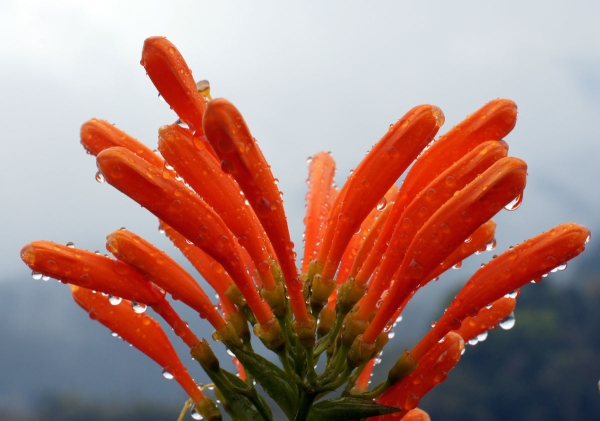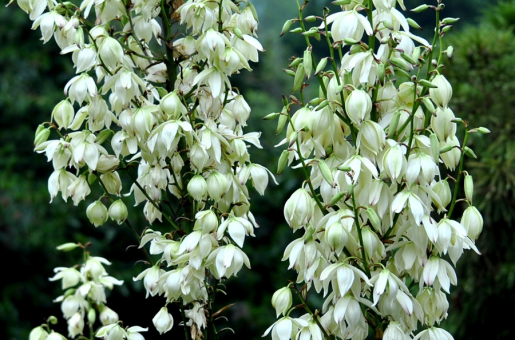Culture method of Camellia Impatiens
Temperature
The most suitable germination temperature of camellia impatiens is 22 ℃-30 ℃, and the favorite growth temperature of the plant is 15 ℃-32 ℃. The summer temperature is too high, so we should pay attention to cool it in a cool and ventilated place. The winter temperature is too low, so it is best to keep it indoors for maintenance.

Soil
Camellia impatiens still have certain requirements on the soil, the soil needs to be loose, breathable and well drained, this kind of soil can be configured according to a certain proportion, or go to a special florist to buy.
Sunshine
Camellia impatiens likes the sun very much. In its growth, it is necessary to let the plant receive sufficient light, which will make the plant grow more luxuriantly and beautifully. If the plant does not have enough light during the growing period, it will grow too much, which will destroy the beauty of the plant. But to pay attention to the summer, to properly shade the plant, do not let the plant in direct sunlight, which will burn the leaves of the plant, in winter, it is best to put the plant indoors where it can accept astigmatism.
Rational watering
Camellia impatiens also have certain requirements for watering, first of all, it is best to spray water with a spray bottle to keep the soil moist and maintain the humidity of the surrounding environment, but pay attention to the fact that there can be no stagnant water in the flowerpot, otherwise the roots of the plant may rot.
The above is the introduction of how to raise camellia impatiens. Let's learn about the matters needing attention.
Culture method of Camellia Impatiens
Cutting Propagation of Camellia Impatiens
The cuttage propagation of camellia impatiens can be carried out in the four seasons of the year, but it is easier to take root and sprout in summer. In general, the steps of cutting include: first, select the branches with stronger growth, and cut off a small section of branches on them as cuttings, and at the same time, be sure to keep the ambient temperature at about 20 degrees Celsius, which can take root after about half a month.
Sowing and propagation of camellia impatiens
Camellia impatiens can be sown and propagated all the year round, mainly by sowing and sowing on demand. The temperature also needs to be kept at about 20 degrees so that it can take root in a week. The specific steps are to determine the cultivation environment according to the seedling stage, first in the nutrition bowl and then transplanted to the basin, which requires the basin soil to be nutritious and apply appropriate base fertilizer. In addition, the camellia impatiens plants in the seedling stage should be pinched according to the branching nature of different varieties. In addition, camellia impatiens are afraid of heat, so it is necessary to keep the environment cool in summer, strengthen ventilation and properly shade the sun. In winter and spring, it is necessary to ensure sufficient light and no shade. In terms of moisture, it is necessary to increase the amount of water during the growing period of camellia impatiens, especially in summer to keep the environment moist, otherwise the plant will wither, but we must be careful not to accumulate water, otherwise the plant will rot. In addition, during the growth period of camellia impatiens, it is necessary to maintain air humidity, spray water around properly and apply fertilizer in time, so that the height and shape of the plant can be controlled, but fertilization should also be paid attention to, and more nitrogen fertilizer should be applied in the early stage. at the later stage, the application of nitrogen fertilizer should be controlled.
When does Camellia Impatiens blossom Culture method of Camellia Impatiens
Camellia impatiens, blooming in the lonely autumn and winter season, the flower language is "Don't touch me". Camellia impatiens is a plant of the genus Impatiens, which is more like camellia and is suitable for potted viewing. Camellia impatiens are beautiful, often blooming all the year round, and are loved by people, and family farming is also interesting. In order to make greater contribution to urban greening, the diseases and insect pests of camellia impatiens are very important. Next, let's take a look at the planting method of camellia impatiens, the flower language of camellia impatiens and the common diseases of camellia impatiens and their control.
Morphological characteristics of Camellia Impatiens
Camellia impatiens, herbaceous flowers, 25-50 cm tall, colorful, shaped like camellias. Crisp and succulent, without stipules, opposite, flowers bisexual, zygomorphic, sepals 3, sparse 5, green, saccate, extending downward into distance; 5-valved when ripe, seeds popped out.
Ecological habits of Camellia Impatiens
Sexual preference for warm, sunny environment, avoid hot, suitable temperature 15-25 ℃, summer cool and shade, not resistant to cold. Sandy soil with good drainage is suitable.
Culture method of Camellia Impatiens
Light and temperature
It has strong adaptability and needs to provide suitable light. The growth temperature is between 15 ℃ and 25 ℃, which is not resistant to high temperature. It is necessary to keep the environment cool in summer, proper shading, avoid direct strong light, and pay attention not to excessive shading, such as lack of light, which may lead to overgrowth of plants, lighter leaves and keep warm in winter.
Watering and fertilizing
Culture camellia Phoenix immortal, water should be sufficient, avoid stagnant water, otherwise it will rot root. In maintenance, watering should be appropriate to maintain the humidity of the air. Timely watering is needed in summer. In order to have sufficient nutrients, thin fertilizer and water can be applied once every 10 times, more nitrogen fertilizer can be applied in the early stage of growth, and the use of nitrogen fertilizer should be controlled before flowering.
Matters needing attention in the Culture of Camellia Impatiens
Reproduction method
Can be used cutting method, can be carried out throughout the year, easy to root, summer can be planted with water.
Diseases and insect pests
In the process of culture, there are many diseases, including quenching disease, white silk disease and mosaic disease, which affect the growth of camellia impatiens. When poor growth is found, timely prevention and control measures should be taken.
Upper basin
When potting, you need to choose sandy soil, and some fertile. The pot needs to grow to a certain size for a certain time.
The Garden use of Camellia Impatiens
The four seasons bloom, many flowers, colorful, highly suitable, can decorate the family and venue, can be placed in the open air.
The Flower language of Camellia Impatiens
The flower words of Camellia Impatiens: "Don't touch me".
When does camellia impatiens blossom?
In autumn, you can enjoy the figure of camellia impatiens, adding color to autumn.
Common diseases of camellia impatiens and their control
Quenching disease of camellia impatiens
Damage to the young stem part, showing water stains. Prevention and control methods, disinfection of soil before sowing, loosening plant density, controlling water volume, strengthening ventilation and so on. After the onset of the disease, the drug chlorothalonil and plague cream were used to treat the disease.
Powdery mildew of Camellia Impatiens
The disease occurs on the leaves of the plant, the leaves are withered and yellow, and gradually spread to other parts, resulting in death. Prevention and control methods: strengthen management, enhance ventilation, clean up in time. After the onset of the disease, choose the solution of strychnine or methyl topiramate.
White silk disease of camellia impatiens
White silk spots, prevention and control methods: soil and water conservation, temperature control, timely drug treatment and so on.
- Prev

The maintenance method of fireworks
Fertilization firecrackers flower in full bloom season, pay attention to the flower fertilizer added. Under normal circumstances, fireworks during the growth of 1 time a month to apply topdressing. Watering firecrackers flower when the soil to keep wet state, when the soil appears dry, it should be timely watering
- Next

The reason why Phoenix tail orchid does not blossom:
In the north, especially in the northeast and northwest regions, there are a lot of land-planted Cymbidium will appear only leaves do not blossom phenomenon. The reason why Phoenix tail orchid does not blossom has something to do with the climate of these areas and so on. Due to the influence of temperature and other conditions
Related
- Fuxing push coffee new agricultural production and marketing class: lack of small-scale processing plants
- Jujube rice field leisure farm deep ploughing Yilan for five years to create a space for organic food and play
- Nongyu Farm-A trial of organic papaya for brave women with advanced technology
- Four points for attention in the prevention and control of diseases and insect pests of edible fungi
- How to add nutrient solution to Edible Fungi
- Is there any good way to control edible fungus mites?
- Open Inoculation Technology of Edible Fungi
- Is there any clever way to use fertilizer for edible fungus in winter?
- What agents are used to kill the pathogens of edible fungi in the mushroom shed?
- Rapid drying of Edible Fungi

